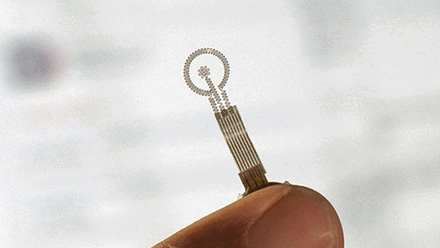
First Transient Electronic Bandage Speeds Healing by 30 Percent
Bandage also monitors the healing process, alerting clinicians to issues in real time.
John Rogers – BME, MSE, ME;
Guillermo Ameer – BME

We’ll guide engineering into the future with new tools and methodologies.
How engineers work in the field is changing, and it’s changing quickly. Now is the time to define how engineers will drive the field forward.
A pillar of our strategic plan is to lead engineering into the next era by building on our existing strengths in three key research areas to foster new tools and methodologies that all engineers will need to know.
Engineering meets biology to develop new tools at the interface
Northwestern engineers will maximize biology’s potential as a method to create devices and technologies that support work across disciplines.
Synthetic biology: Alongside collaborators from Northwestern’s Feinberg School of Medicine and Weinberg College of Arts and Sciences, we are using the fundamental molecules of life — DNA, RNA, and proteins — to design new tools and systems to tackle global challenges such as water quality, crop health, biological drug delivery, and plastics upcycling.
Bioelectronics: We are developing the guiding mechanical, material, and biological processes to overcome the mismatch between biological systems (soft, curvilinear, and transient) and modern semiconductor devices (rigid, planar, and long lasting), supporting platforms that integrate seamlessly in the human body and provide unprecedented clinical healthcare capabilities.
Biomaterials: We are creating self-assembled, synthetic, and nanoscale materials designed to interact with the human body in new ways, supporting innovative therapeutics and regenerative medicine.

Bandage also monitors the healing process, alerting clinicians to issues in real time.
John Rogers – BME, MSE, ME;
Guillermo Ameer – BME
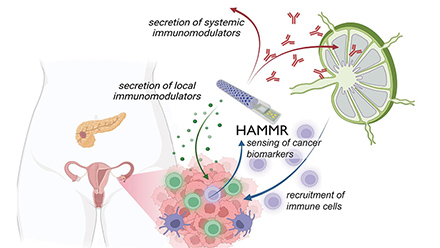
Implant will house living engineered cells that both synthesize and deliver therapies when needed.
Jonathan Rivnay – BME;
Shana Kelley – BME

Genetic networks mimic electronic circuits to perform a range of logic functions.
Julius Lucks – ChBE
New materials are co-designed alongside their desired applications
Traditionally, technologies have been designed to function using existing materials. By combining strengths in materials science, generative AI, and machine learning to predict material behavior, Northwestern engineers are advancing methods that allow researchers to design materials at the atomic and microstructural level while simultaneously designing the product for which they will be used. This new method pushes the boundaries of materials innovation in electronics, batteries, and quantum technologies.

New AI algorithm can significantly speed up and guide the discovery of more efficient and longer-lasting electrolytes for batteries.
Wei Chen – ME;
James Rondinelli – MSE
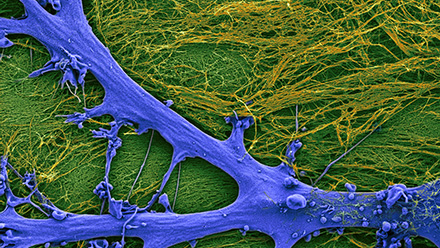
Highly dynamic synthetic superstructures self-assemble, change stiffness of soft materials, then revert.
Samuel Stupp – BME, MSE
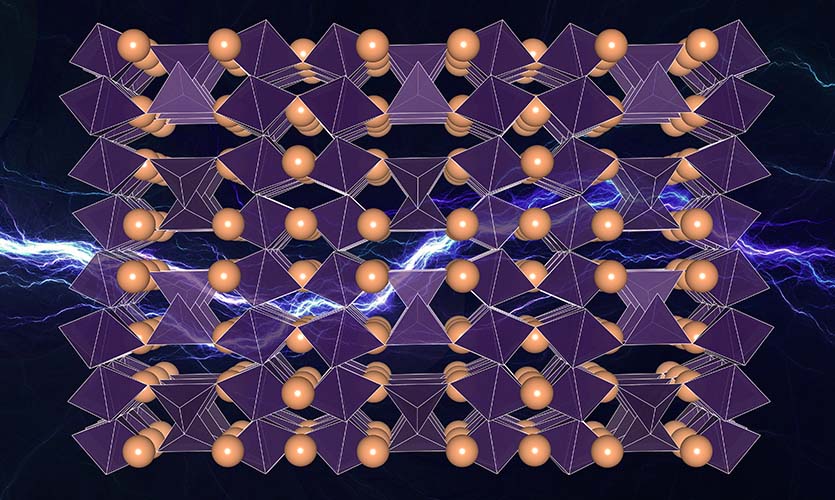
New material blurs distinctions between metals, polar materials, and magnets.
James Rondinelli – MSE
Tools to manage and query vast amounts of data, discover insights and make predictions, and build models to test theories
Data has undoubtedly changed how engineers think, teach, and work. By combining existing strengths in AI and machine learning, optimization, and applied mathematics, Northwestern engineers use data to develop models that drive understanding and to help guide decision-making.
One of the steps we are taking to accomplish this goal is to develop advanced learning algorithms that extract essential structures in vast data sets and that allow systems to adapt dynamically to changing environments and unforeseen challenges. Its diverse applications range from autonomous systems — such as cars or robots — to the biology of cells to advanced financial models making predictions in fluctuating markets.
These methods allow us to leverage the data to improve decision-making across many fields, such as:
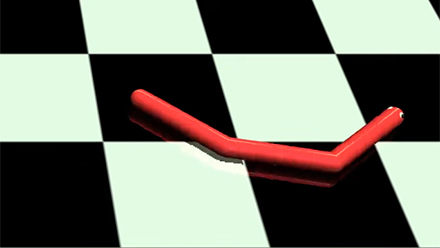
A new algorithm that encourages robots to move more randomly to collect more diverse data for learning. This advance could improve safety and practicality of self-driving cars, delivery drones, and more.
Todd Murphey – ME
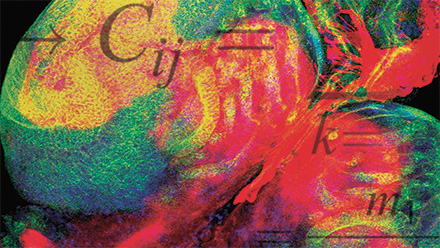
Northwestern Engineering faculty are decoding biological findings using the language of mathematics.
William Kath – ESAM

Interdisciplinary faculty will use power of data and computation to solve grand challenge problems of this century.
CS, ECE, and IEMS Departments